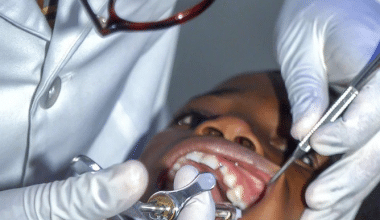Medics, this article is dedicated to you! The branches of medicine are numerous. Choosing a specialty requires both love for that aspect of medicine and the energy to undergo the training. Are you seeking a program that requires a lesser time of study?
Here it is! This article contains the shortest medical residency programs you can enroll for and graduate in no distant time.
Most medical students dread the period of residency because of the rigorous training they have to undergo. Trust me, it is no joke spending extra years in training just when you start getting the feeling that it is over.
Medical residencies or internship comes after your medical school. That is to say, for you to qualify to attend a medical residency, you have to finish medical school first.
Since we have given you a snapshot of a residency requirement already, let us move straight into our topic of discussion.
Before then, have a look at our table of content;
Table of contents
- What Is A Medical Residency?
- How Long is A Residency Program?
- How Many Years of Residency for a Doctor?
- How do I get into a Residency Program?
- 1) Register with the USMLE
- 2) Pass the USMLE® Exams
- 3) Get Valuable Clinical Experience in the USA
- 4) Register with the AAMC
- 5) Pick your Residency Programs
- 6) Get your ECFMG Token and Register with ERAS
- 7) Finalize Documentation and Submit ERAS Application
- 8) Medical Residency Interview
- 9) Register with the NRMP
- 10) Residency Post-Match
- What is the Shortest Residency?
- 15 Shortest Residency Programs in the World
- Which Schools Can you take Medical Residency Programs?
- FAQs on 15 Shortest Residency Programs in the World
- Conclusion
- References
- AUTHOR’S RECOMMENDATION
Here it is! Check out this list of medical specialties with the shortest residency.
What Is A Medical Residency?
Medical residency is a period of training after completing medical school when you intern in a hospital for practical experience.
Different areas of specialization require different periods of study. While some require long periods of time, others require a short time.
Well, this article concentrates on those shortest medical residency programs for students who love to go into those areas of study.
Now using technical terms, Medical Residency or postgraduate training is another stage in the medical education taken by qualified physicians, dentists, optometrists, pharmacists, etc, usually in a hospital or clinic under the supervision of a senior registered physician or consultant.
Students require this training to be able to get a license to practice medicine. Students are called residents, house officers, trainees, and interns depending on their location.
If you wish to specialize further, after your residency, you may still proceed to attend a fellowship or sub-specialty training.
People Also Read: Australian Permanent Residency Visa and Citizenship requirements
How Long is A Residency Program?
Actually, the length of your medical residency is a result of your specialization.
As we have already established, some specializations require more training than others.
For example, surgeons require more training than the general physician who just diagnoses and refers you to a consultant for further diagnosis and probably treatments.
In addition, highly specialized areas of medicine such as pediatric radiology, female pelvic medicine, or reconstructive surgery, will also need to complete additional fellowship training.
Generally speaking, residency lasts for three to seven years.
Check Out: 20 Best Pharmacy Residency Programs In The World | 2023 Rankings
How Long is an Internal Medicine Residency?
Because there are so many alternatives for practice concentration within internal medicine, the basic framework of the specialty might be perplexing.
Internists, on the other hand, all have a common basis of training that serves as the foundation for any discipline of internal medicine they choose to practice.
Basically, an internal medicine program requires three years of residency (sometimes known as “categorical” training) after medical school.
Residents are eligible for board certification in internal medicine after completing three years of training.
Approximately half of the internal medicine residents in the United States choose to practice general internal medicine.
People Who Read this Ends Up Reading 21 High Paying Medical Jobs With Little Schooling
How Long is a Family Medicine Residency?
Family medicine is concerned with long-term care in the framework of the family. Family physicians use a wide variety of cognitive and procedural abilities and, when appropriate, collaborate with other specialists.
Basically, they receive training in surgery, psychiatry, internal medicine, obstetrics and gynecology, pediatrics, and geriatrics.
Hence, it takes 3 years of residency to complete a family medicine residency program.
Also, a minimum of three years of postgraduate coursework in an ACGME-accredited training institution is required.
How Many Years of Residency for a Doctor?
While you’re pondering how to get into the top medical school and assessing your medical school prerequisites, you’ve undoubtedly already started wondering how long it takes to become a doctor.
It’s easy to become overwhelmed by the timetable. Medical school takes four years, residency takes three years, and you’ll need a couple more years if you want to specialize with a fellowship.
However, the length of your residency is determined by the specialization you choose. The majority of residencies last three to seven years.
Doctors in family practice, internal medicine, and pediatrics, for example, must complete a three-year residency.
Certain disciplines, such as surgery and urology, have longer residencies. Keep in mind that, depending on your goals, you may need to pursue more training in the form of a fellowship after completing your residency.
Depending on your specialization, fellowship training might last anywhere from one to three years.
How do I get into a Residency Program?
Applying for a medical residency can be a very tedious task.
In the US, to get into a medical residency, you have to follow through with the following processes as an IMG.
International medical graduates (IMGs) are people who attended non-U.S. and non-Canadian medical schools. Everyone who attended these schools is considered an IMG, including U.S. and Canadian citizens and permanent residents.
The process includes;
1) Register with the USMLE
This is the first step in applying for a medical residency.
The Educational Commission for Foreign Medical Graduates® (ECFMG ) will certify the qualifications of the IMG physician before they can begin their U.S. Residency.
But first, you will have to register with the ECFMG. This starts the application process.
2) Pass the USMLE® Exams
The United States Medical Licensing Examination (USMLE) is a three-step examination for a medical license in the United States.
USMLE Step 1 exam examines how you understand and apply basic sciences to the practice of medicine.
For, The USMLE Step 2 CK, you will be tested on the application of medical foundation and understanding of clinical science for the provision of patient care.
The USMLE Step 2 CS assesses your ability to employ medical knowledge and skills in a practical, patient-oriented setting.
USMLE Step 3 is the final examination. It focuses on providing patient care in an ambulatory setting. But, you have the option to either write this exam before applying for an IMG residency or at the end of your residency year.
3) Get Valuable Clinical Experience in the USA
As an undergraduate that has not even started the USLME, start looking for clinical rotation opportunities, it is going to be handy in your application for residency.
The application requires some practical clinical experience. Check for hands-on Externship in the United States and clinical rotations opportunities.
4) Register with the AAMC
The Association of American Medical Colleges (AAMC) runs the Electronic Residency Application Service (ERAS). ERAS is the centralized online application system you will use for applying to residency programs through the MyERAS Portal.
5) Pick your Residency Programs
By now you will have taken several of your USMLE Exams and will have a better understanding of how competitive you are as IMG for the Medical Residency Match.
This helps to screen the hundreds of US residency programs in selected specialties like Internal Medicine, Family Medicine, Psychiatry, etc.) to find those you will be competitive in.
Search for the residency program list here.
6) Get your ECFMG Token and Register with ERAS
Obtain your ECFMG Token through the OASIS or the MyECFMG mobile app.
The ECFMG Token is a 14-digit alphanumeric number that is unique to you. Once you have your token, register with ERAS.
7) Finalize Documentation and Submit ERAS Application
Since you have already identified the residency programs you are qualified for, now apply to them through ERAS. In addition, you must include all supporting documents.
These documents include;
- Residency personal statement
- ERAS Common Application Form
- Curriculum vitae, and
- Letters of recommendation.
8) Medical Residency Interview
This is one of the most important steps in the process.
After you submit your ERAS application, you may be asked to interview at one or more residency programs.
Preparing for your medical residency interview and participating in mock interviews.
9) Register with the NRMP
This follows your interview.
The National Residency Match Program (NRMP) runs the annual Residency Match which pairs IMG residency applicants with residency and fellowship programs. This Residency Match uses rank order lists submitted by both applicants and residency program directors to determine how applicants and programs should be partnered.
After your interviews, you will rank residency programs in order of preference.
Log into ERAS and update your profile with NRMP ID. Now you are ready for the ERAS Residency Match.
10) Residency Post-Match
If you have an IMG Match, then congratulations!
If you have not been matched, you have a second chance with the post-residency Supplemental Offer and Acceptance Program, SOAP. Here you can compete for the Residency Match’s remaining unfilled positions.
We have simplified this process so international students can succeed in the IMG residency application process.
What is the Shortest Residency?
From the list below, the shortest residency program amongst them all is Family Medicine practice.
It takes practically 2 – 3 years to complete a family medicine residency program.
15 Shortest Residency Programs in the World
The basic ranking factor for these programs is duration. By this we mean, the length of study time you need to complete the program.
Without much ado, here are the top 15 shortest medical programs in the world of medicine.
- Family Practice: 3 years
- Internal Medicine: 3 years
- Pediatrics: 3 years
- Emergency Medicine: 3 – 4 years
- Physical Medicine: 3-4 years
- Obstetrics and Gynecology: 4 years
- Anesthesiology: 3 years plus PGY – 1 Transitional / Preliminary
- Dermatology: 3 years plus PGY -1 Transitional / Preliminary
- Neurology: 3 years plus PGY -1 Transitional / Preliminary
- Ophthalmology: 3 years plus PGY -1 Transitional / Preliminary
- Pathology: 4 years
- Psychiatry: 4 years
- General Surgery: 5 years
- Orthopedic Surgery: 5 years (includes 1 year of general surgery)
- Otolaryngology (ENT): 5 years
- Urology: 5 years (includes 1 year of general surgery)
- Plastic Surgery: 6 years
- Neurosurgery: 7 years
If you noticed, we didn’t include the 1-year preliminary medicine internship or transitional year residency. With this you will get licensed as a doctor, however, you will find it difficult to get a job in any hospital or clinic unless you’ve had practical knowledge prior to the training.
Also, we listed more than 15 medical residency programs in the world, but, we are going to discuss only 15. Stay with us as e discuss the medical specialties with the shortest residency!
Family Practice:
Family medicine (FM), formerly family practice (FP), is a medical specialty devoted to comprehensive health care for people of all ages. Some people refer to them as general doctors.
These physicians are trained to prevent, diagnose and treat a wide variety of ailments in patients of all ages.
Family medicine focuses on care within the context of the family. The students receive training in surgery, psychiatry, internal medicine, obstetrics and gynecology, pediatrics, and geriatrics.
Also, they work with other physicians when necessary.
It takes about 3 years to complete. Their Median Academic Salary is $192,000 whereas the Median Clinical Salary is $211,000.
Internal Medicine:
Another of the shortest residency program length is Internal medicine which takes about 3 years.
Internal medicine is a broad area that covers the body’s major organ systems.
The general internist is a physician who provides care in the office and the hospital, managing both common and complex problems in adolescents, adults, and the elderly. They are experts who can diagnose and treat both acute and complex illnesses, and promote health and wellness.
They are also trained in the essentials of primary care which involves an understanding of disease prevention, wellness, substance abuse, mental health, and effective treatment of common problems of the eyes, ears, skin, nervous system, and reproductive organs.
Also, their salary structure;
| Median Academic Salary | $211,000 |
| Median, Clinical Salary | $229,000 |
Pediatrics:
Pediatrics is a specialty that is primarily concerned with the physical, emotional, and social health of children from birth to young adulthood.
Their job involves preventive health as well as the diagnosis and treatment of both acute and chronic diseases.
This shortest medical residency length is for a period of 3 years.
About the salary, Academic Salary is $182,000 while the Clinical Salary is $220,000.
Allergy and Immunology:
This is a specialization in internal medicine. But with a degree in pediatrics, you can also undergo training.
However, this residency training program prepares physicians for the delivery of medical care to patients suffering from allergic, asthmatic, and immunologic diseases.
Emergency Medicine:
Many students specialize in this shortest medical residency of 3-4 years.
Here’s an overview;
Emergency medicine focuses on the recognition, evaluation, and care of patients who are acutely ill or injured. It is a high-pressure, fast-paced, and diverse specialty that requires a broad base of medical knowledge and a variety of well-honed clinical and technical skills.
Emergency physicians treat all age groups in conditions with varying degrees of severity. Because of this, their training covers areas such as disaster medicine and mass gatherings.
For the salary,
| Median, Academic Salary | $272,000 |
| Median, Clinical Salary | $320,000 |
Physical Medicine:
Physical medicine and rehabilitation are also referred to as physiatry.
It is about diagnosing, evaluating, and treating patients who do not function properly due to diseases, injuries, impairments, and/or disabilities.
Well, they work to restore the body and mind, in addition, to relieving pain. Physiatrists have special training in therapeutic exercise, prosthetics, orthotics, and the use of other durable medical equipment.
This shortest medical residency length is 3-4 years.
| Median, Academic Salary | $226,000 |
| Median, Clinical Salary | $252,000 |
Obstetrics and Gynecology:
This is about medical and surgical care for women.
It combines two specialties: obstetrics, which cares for women before, during, and after childbirth, and gynecology, which involves the diagnosis and treatment of disorders of the female reproductive system.
These professionals often serve as consultants to other physicians, but in many cases, they are primary caregivers which means that they attend to patients directly and give counsel.
The relationship is often maintained through post-menopause.
This medical residency length is 3-4 years. Salary is,
| Academic Salary | $274,000 |
| Median, Clinical Salary | $309,000 |
You can also check out How To Prepare For Medical School Interviews In 2023
Anesthesiology:
It is a discipline that involves the management of patients who no longer feel pain and stress during surgical, obstetric, and certain other medical procedures.
They actually care for patients through the following a) pain management b) cardiopulmonary resuscitation c) respiratory care problems, and d) the management of critically ill and/or injured patients in special care units.
This shortest residency is for 4 years.
| Academic Salary | $353,000 |
| Median, Clinical Salary | $426,000 |
Dermatology:
This shortest medical residency treats disorders and diseases of the skin, mucous membrane, hair and nails, and a number of sexually transmitted diseases.
Dermatologists deal with a wide variety of diseases including acne, warts, multiple inflammatory dermatoses, skin cancers, autoimmune diseases, occupational dermatoses, and contact dermatitis.
They treat patients using surgical procedures (e.g., excisions, sclerotherapy, laser surgery, liposuction, hair transplants, and tissue augmentation therapies), prevention of skin diseases and cancers, and treatment of photoaging skin.
The salary structure for academic Salary is $315,000 and Median Clinical Salary is $450,000.
Neurology:
So many people think this specialty treats only brain diseases. That is not entirely true.
Actually, it treats nervous system disorders in which the brain, spinal cord, nerves, muscles, and blood vessels are among.
Some of the medical problems they see daily are headaches, strokes, and seizures. Most of them are consultants.
The shortest residency length is 4 years. Whereas the Academic Salary is $223,000 and Median Clinical Salary is $268,000.
Ophthalmology:
This field of medicine deals with the structure, function, diagnosis, and treatment of the eye and the visual system. It provides patients with total eye care using medical, surgical, and rehabilitative services.
The shortest residency length is 4 years.
the salary is shown below;
| Median, Academic Salary | $304,000 |
| Median, Clinical Salary | $370,000 |
Pathology:
This deals with the causes and nature of diseases. Along with radiology, it is diagnostic in nature. It combines clinical training with laboratory expertise. While pathology was considered research-focused, today it is both purely clinical and investigative.
It takes 4 years of residency.
| Median, Academic Salary | $258,000 |
| Median, Clinical Salary | $363,000 |
Psychiatry:
This prevents, treats, and diagnose disorders including mental, emotional, and behavioral disorders, and the common medical and neurological disorders that relate to the practice of psychiatry.
The duration of the residency is 4 years.
| Median, Academic Salary | $208,000 |
| Median, Clinical Salary | $227,000 |
General Surgery:
General surgeons are trained to manage diverse diseases and injuries in almost any area of the body which requires surgery.
These physicians are involved in the diagnosis and pre and post-operation care. They are usually responsible for the comprehensive management of trauma and critical care patients as well.
Although its scope is broad, general surgery usually involves the abdomen, breasts, peripheral vasculature, skin, and neck.
The Median Academic Salary is $358,000 and for Clinical Salary is $383,000.Meanwhile, it takes about 4-5 years to complete.
Orthopedic Surgery:
Orthopedic Surgery is the medical and surgical specialty that includes the study and prevention of musculoskeletal diseases, disorders, and injuries and their treatment by medical, surgical, and physical methods.
The residency length is 5 years.
Salary is seen below;
| Median, Academic Salary | $504,000 |
| Median, Clinical Salary | $559,000 |
Otolaryngology:
With the exception of visual and eye-related disorders (treated by ophthalmologists) and lesions of the brain (treated by neurologists and neurological surgeons), otolaryngologists treat diseases and lesions above the shoulders in patients of all ages, including ears, respiratory and upper alimentary systems in the head and neck in general.
In addition to allergy, and facial plastic surgeries, they also have an understanding of the communication sciences, endocrinology, and neurology.
It takes 5 years to complete. Salary structure;
| Median, Academic Salary | $364,000 |
| Median, Clinical Salary | $401,000 |
Which Schools Can you take Medical Residency Programs?
So many schools of medicine offer residency programs. But, for the sake of this article, we will just mention a few.
Students are automatically matched to the residency programs that suit their qualifications by AAMC.
It is important you know that these were chosen randomly.
They include but are not limited to these;
- Washington University School of Medicine St. Louis
- Stanford University School of Medicine
- All Saints University School of Medicine, Dominica
You may also like to see: Copy Our Medical School Personal Statement Examples (Make It Even Better)
FAQs on 15 Shortest Residency Programs in the World
Residency is the period of training after completing medical school, where you get practical experience on all you’ve been taught in the hospital while working under the supervision of a consultant.
The duration of the residency training depends on your specialty.
Generally speaking, residency lasts for three to seven years.
But, if you want to specialize in areas of medicine such as pediatric radiology, female pelvic medicine, or reconstructive surgery, you will also need to complete additional fellowship training.
The salary varies among residents.
The Association of American Medical Colleges (AAMC) has a breakdown of the salary structure.
The most recent survey reports a first-year resident physician stipend of $56,126 for the 2018–2019 academic year. The fourth-year resident stipend is a mean of $63,014 for the same period.
Residents are typically eligible for benefits as well. These all depend on the residency program you are enrolled in.
The shortest medical residencies are;
Family Practice: 3 years
Internal Medicine: 3 years
Pediatrics: 3 years
Massachusetts General Hospital (Boston, MA)
Johns Hopkins Hospital (Baltimore, MD)
Brigham and Women’s Hospital (Boston, MA)
University of California, San Francisco Medical Center (San Francisco, CA)
Mayo Clinic
Conclusion
To attend medical residency training, make up your mind to spend at least 3 years for the shortest medical residency programs.
Did you see those very interesting medical specialties you can study? Trust me, they are well worth the time and effort you’ll put into the study.
You’ll also agree that the salary is commensurate with the efforts.
As a medical student, these are the shortest medical residency length you can get. Interested in spending less time in training? Here is your best choice.
Read through the post and get back to us in the comment box.
Best of luck!
References
- medrookie.com – what are the shortest medical residency programs
- residency.wustl.edu – length of residencies/residency descriptions
- imgprep.com – 10 steps to medical residency in the USA
- Physiciansalaries – residency lengths
- Steal Our Letter of Intent Medical School Templates
- How To Prepare For Medical School Interviews
- 15 Best Early Assurance Medical Programs
- Common Medical School Interview Questions | FAQ
- 27 Scholarship for Medical Students from Developing Countries |UPDATED
Does this article meet your immediate needs? If yes, click the SHARE button to share with your friends. If not, leave a response in the comment box to express your concern or ask a question and we will get back to you as soon as possible.





